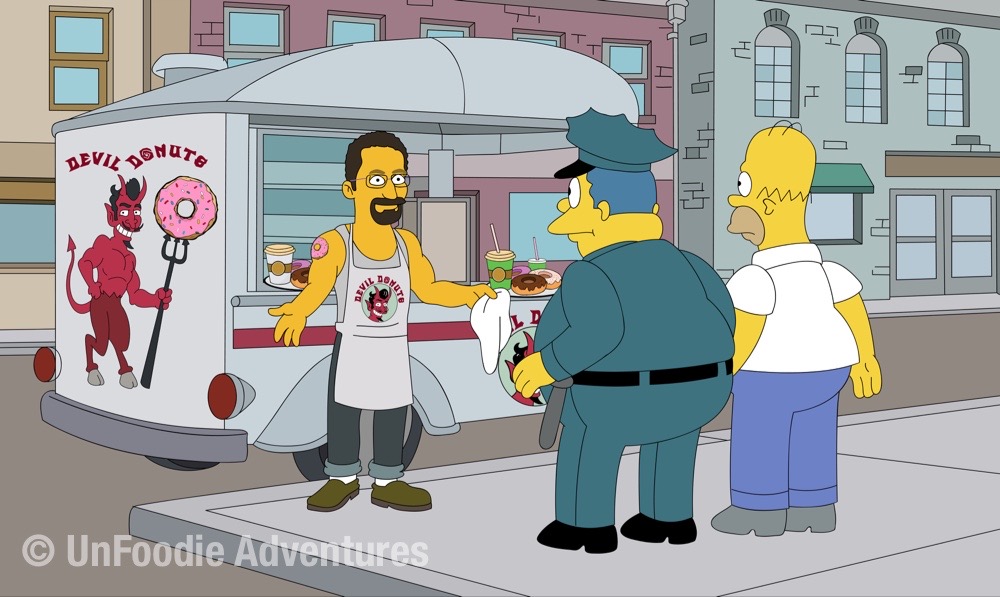Oh, it’s so much more than “just a taco truck”
Food is a direct reflection of our history and society. So how do we fit the phenomenon of food trucks into our cultural framework? Nowadays, grabbing a meal at a food truck isn’t seen as “slumming it” or “settling cuz there isn’t a real restaurant around” – it can be a great dining experience that people actually seek out. In many food-centric locales, gourmet food trucks and community organized food truck events are all the rage and oh so foodie. Think “Off the Grid” or “MVBL Feast”! But, how did we get here? Even 20 years ago, grabbing a meal at a food truck was the domain of blue-collar workers who wanted to have a warm lunch, preferably of their native cuisine. And that takes us to, sort of the beginning of the story. It probably isn’t a surprise to anyone that the original food truck (in today’s configuration) was a taco truck. But this isn’t the real beginning of mobile food in this part of the world – for that we have to go almost 300 years earlier to New Amsterdam (today known as New York City).
In 1691, New Amsterdam began regulating street vendors selling food from push carts. This mode of feeding the masses was efficient and convenient allowing one team to feed workers in many locations. These carts were so successful, they spread across the bigger cities of the new world over the next 100 years.
The next notable evolution came 175 years later from the great frontier of the day – the wild west. Charles Goodnight, a rancher in Texas, started to use a wagon train with a full kitchen to feed himself and his team during the months-long cattle drive trips. In 1866, Goodnight modified an old army surplus wagon. He equipped the wagon with shelves, storage space, a hinged lid for counter space, a water barrel and even a canvas to haul firewood – yes, everything including the kitchen sink. Eventually, he realized that feeding folks might be more profitable than moving steer. He focused on this full time and the Chuck wagon was invented!
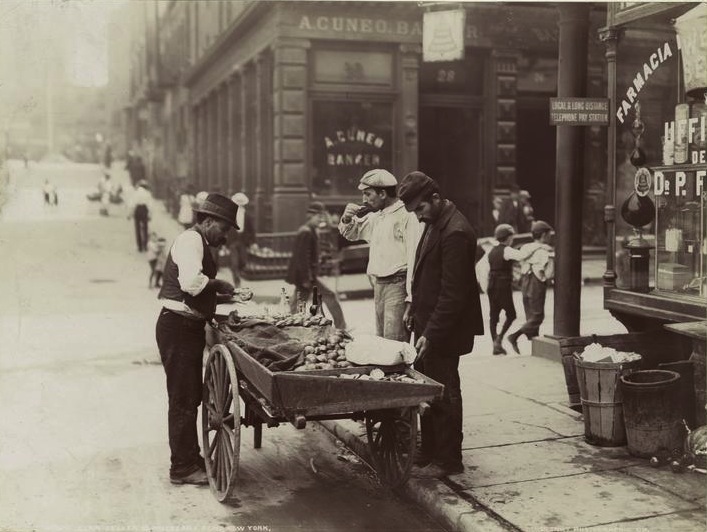
Oyster Cart in New York City
~ 1890s (200 years and going strong)
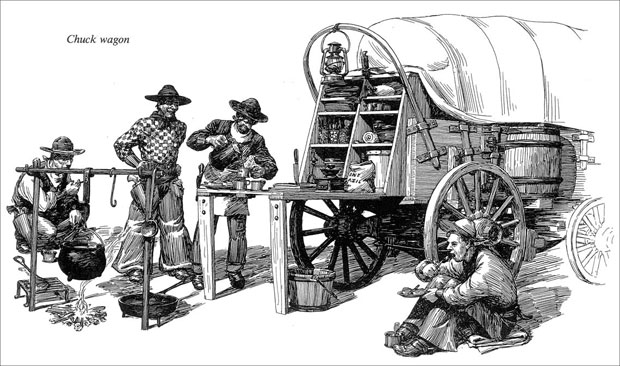
Chuck wagon
Feeding the frontier
Back to the taco truck: The person credited with opening the first taco truck is a man named Raul Martinez. In 1974, Martinez converted an old ice cream truck into a mobile taco making station and parked it outside of a Los Angeles bar. His idea was a huge success and after only six months of working out of his truck he was able to open a restaurant – back then, the goal was to get into a brick-and-mortar setting as quickly as possible. Of course, his success bred clones and taco trucks became a familiar sight in California and soon spread across the southwestern U.S. It didn’t take long for other food businesses to adopt this strategy and in the early 2000s the food truck trend started to catch on.

Raul and his taco truck
The current food truck craze began in 2008 fueled by the The Great Recession where the U.S. labor market lost over 8.4 million jobs. During this challenging time hordes of ambitious culinary minds turned their employment struggles into an opportunity to chase a larger dream of becoming business owners and serve food creatively and on their own terms. Startup costs were more manageable than many other endeavors. Skill sets were perfect for the task at hand – people didn’t need extensive or technical training. Social media powered a style of marketing ideal for this pop-up and mobile business style. And most importantly, customers were thrilled to find a cheap way to get a great and often unique meal, without having to pay “full restaurant prices”. It isn’t surprising at all that during this time period, there was an explosion of food trucks across the culinary spectrum. Confirming this cementing of the food truck phenomenon into our social fabric, Zagat started to review them in 2011.
In the Bay Area, there are more taco trucks than one can count, much less review. You can always find one or two within a mile of where ever you plan to have lunch. In some places their density is so great that they line up in a row along a main thoroughfare giving people choice they may not be comfortable with. South San Francisco, is one such area. It also happens to be a locale with which I have more than a passing familiarity. I love freshly made tacos and so I reveled in the available variety. I’ve happily explored most of these “local” taco trucks. Many are quite good (great even), but my favorite is the red, yellow and orange Taqueria 2 Amigos truck that is often parked near the blind end of Haskins Way.
As with many of the trucks in the region, they make more than just tacos, serving burritos, nachos, quesadillas, tostadas and more. However, we are here to talk about tacos, and that is pretty much what I order when I come here. They serve 2 tiers of tacos: taco and super taco. As is standard in the industry, super tacos come with additional goodies like guacamole and sour cream – things I’m not sure would add to the food truck taco experience. Besides, I am a purist and pretty cheap, so it’s simple tacos for me…
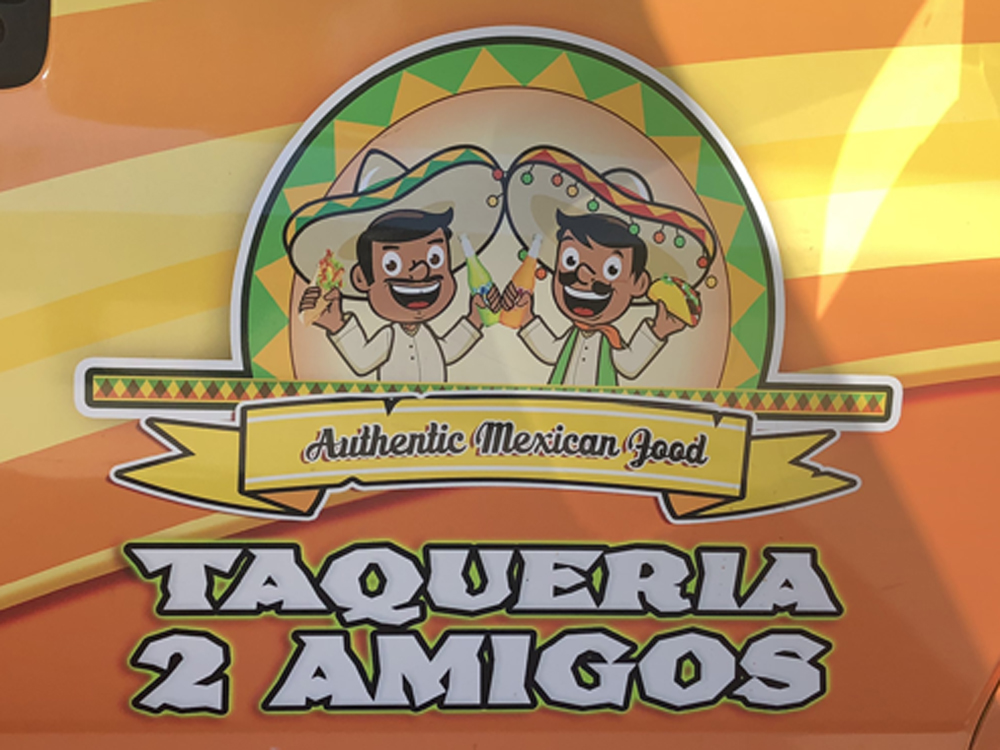
The tacos are comprised of a meat filling that rests on 2 freshly made corn tortillas. One can choose from chicken, shrimp, pork (carnitas – lightly spiced and braised; al pastor- marinated and cooked shawarma style) or beef (carne asada – grilled and sliced sirloin steak usually mildly seared; machata – shredded and spiced). Over the years, I’ve tried all of these but my favorite is the al pastor pork taco. Not only is it spiced well, but also the highest quality meat of all the options. The taco is garnished with finely diced onions, cilantro and a combination of red (tomato and roasted chili) and green (lime) sauces and served with lime and sliced radish. Other excellent tacos include the chicken and the shrimp tacos. Why not try all three?
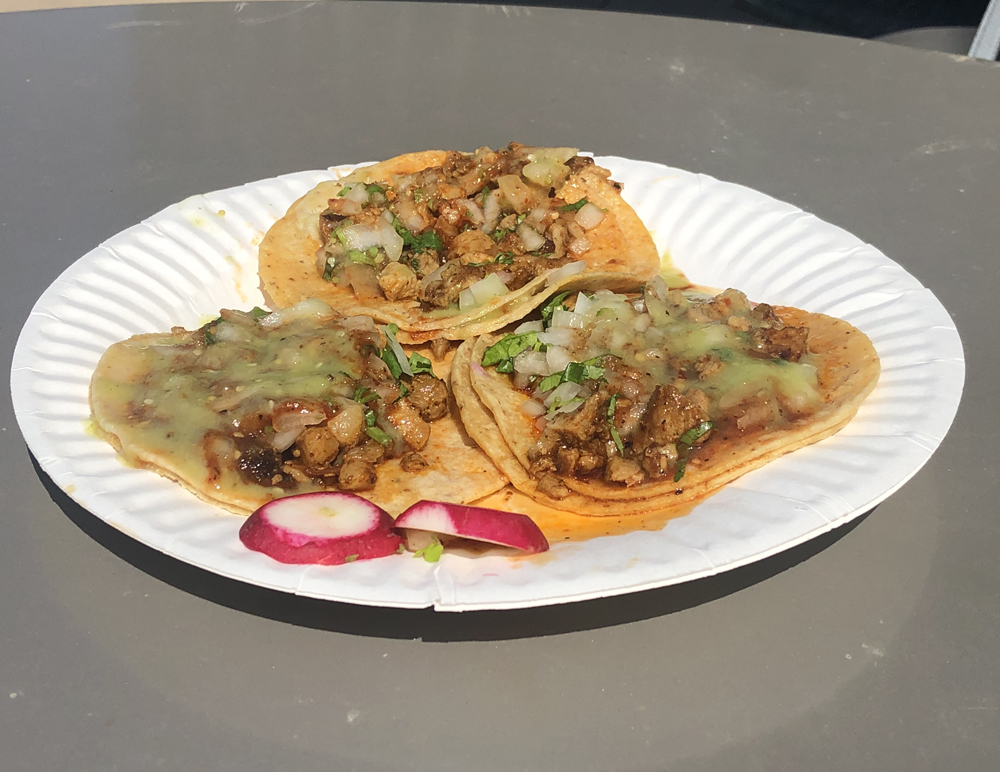
While the general popularity of food trucks and the plethora of culinary options is a relatively new phenomenon, they have been successfully feeding the masses for years. They have slowly evolved over centuries to meet the needs of the people as society has changed. They have served us in the heart of our urban centers and at the fringes and frontiers. And while food trucks will continue to change, their presence will remain a constant. I eagerly await a time when the coveted Michelin Star system intersects with this culinary sensation. It isn’t a future that’s too far off…

